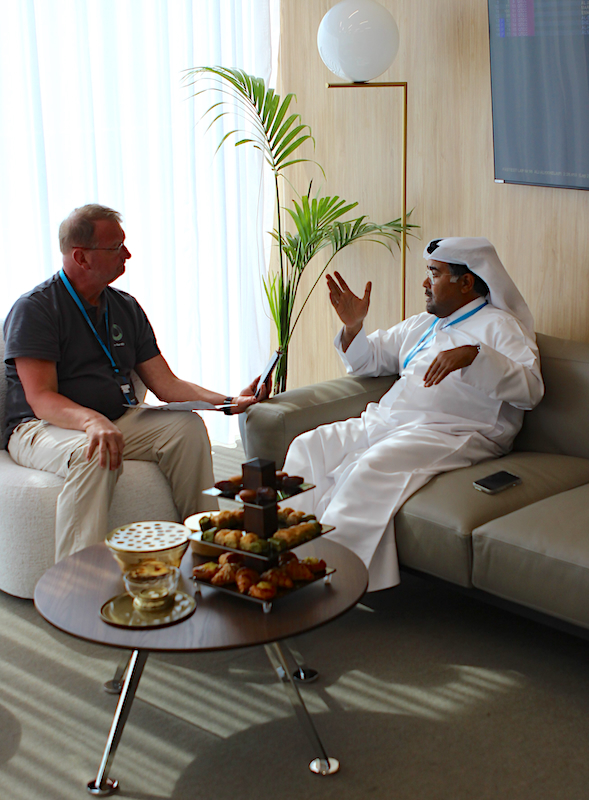The addition of the Losail International Circuit in Qatar to the FIA World Endurance Championship calendar in 2024 marked one of the biggest shake-ups in the championship’s history. We travelled to Losail International Circuit for the Prologue and season-opener and spoke to the man in charge of the circuit.
For many motorsport fans, Qatar is immediately associated with MotoGP – the motorcycle world championship has raced there since 2004 – rather than multi-class endurance racing. The arrival of Formula 1 in 2021 showed that other forms of racing can also thrive there.
The Qatari government soon recognised the potential of the race track and invested a great deal in creating a venue for exciting motorsport. “A lot has changed at Losail International Circuit in the past 20 years,” said the track’s CEO Abdulrahman bin Abdullatif al-Mannai. “The government provided us with funding, which we used to upgrade and modernise the circui, to make sure that it can move with the times and become more sustainable. For example, all of the buildings are now powered with clean energy, and energy-efficient LED bulbs are installed in the floodlights around the track.”
In order to continue to attract major championships like the FIA WEC, the circuit management have placed a particular focus on offering a quality experience for everyone on site. “We also wanted to make the paddock and the facilities here more warm and welcoming, and ensure that everyone has a great time in Doha,” Abdullatif al-Mannai adds. “But our focus is also on the spectators, and making sure that they have a great experience here Losail International Circuit and enjoy the motorsport we have to offer here.”
Driver input on track layout

Despite all of the changes to the circuit facilities, it was important to the circuit management that the track remained uncharged. “When Formula 1 came here during the pandemic, we got a lot of feedback from the drivers,” the Losail International Circuit CEO says. “Just like the MotoGP riders, they all said that they loved the track layout in Qatar and that it was well-suited to four-wheeled motorsport.”
“That was great to hear, as the layout is part of our heritage, and is well-known among fans the world over,” the circuit CEO adds. “We only added a couple of corners, which are only intended for practice and testing sessions.”
The arrival of the WEC this year and the expansion and constant development of the circuit facilities form part of a more-extensive motorsport programme for al-Mannai. Alongside his role on the circuit’s management team, he is also chairman of the Qatar Motor and Motorcycle Federation and responsible for the future of motorsport in the Middle Eastern country. “It’s a fantastic feeling to have another world championship race here with the WEC and welcome all of these fantastic manufacturers to Qatar. Whether it’s Porsche, Ford or Ferrari, this championship shows our young drivers where their motorsport future may lie.”
The plan for the future: teams and drivers from Qatar
To promote the next generation of motorsport talent, the Gulf state runs the Qatar Academy. Its aim is to help young drivers between the ages of 7 and 17 find their way into motorsport. “If we discover a new talent, we find a place for them in karting and then see where the journey may take them, be it in circuit racing or rallying.”
Abdullatif al-Mannai is proud of what the programme has already achieved: “One major element of the Qatar Academy is that we send our young drivers to Europe for the summer, where they can race against stronger competition and develop their skills. We hope one day to have our own team in the WEC and that our drivers reach the likes of Formula 3, Formula 2 and even Formula 1.”
The WEC’s first foray into Qatar was undoubtedly a success. It remains to be seen whether some home-grown talent can make its way into the series in the coming years. The groundwork has been laid, and Qatar will remain a firm fixture on the WEC calendar for the years to come.
Interview & images © WEC-Magazin

